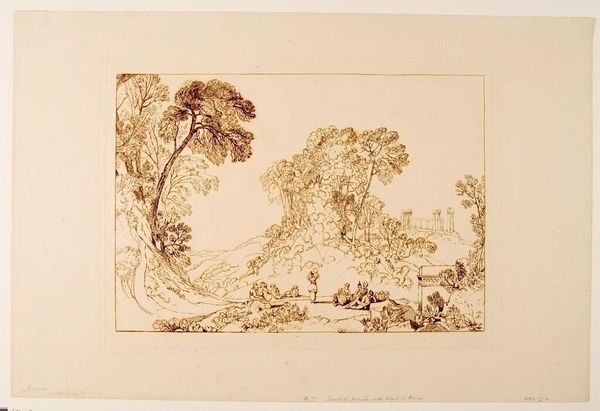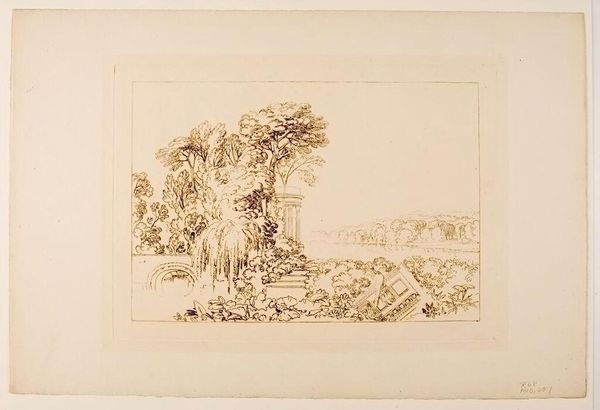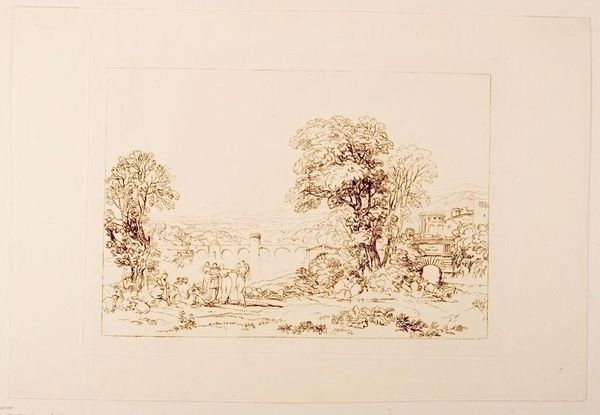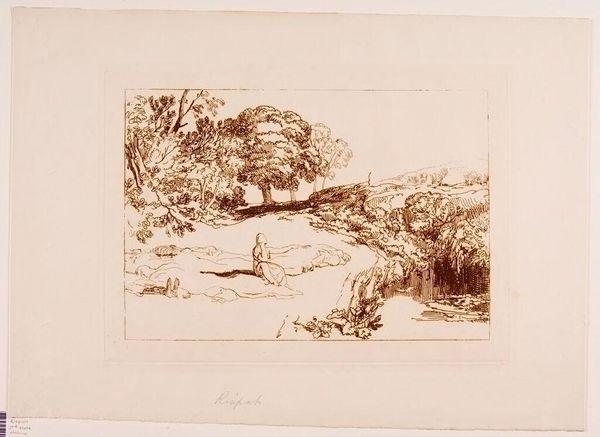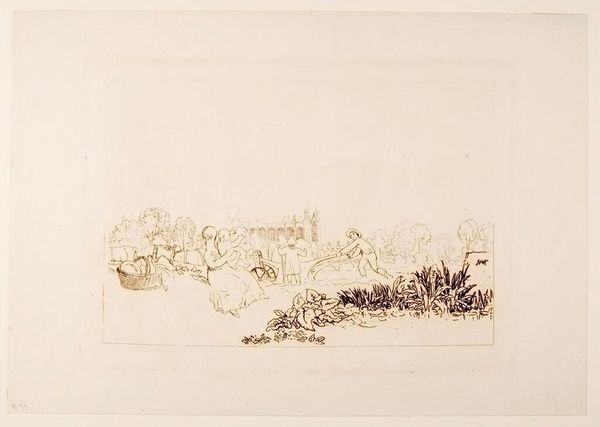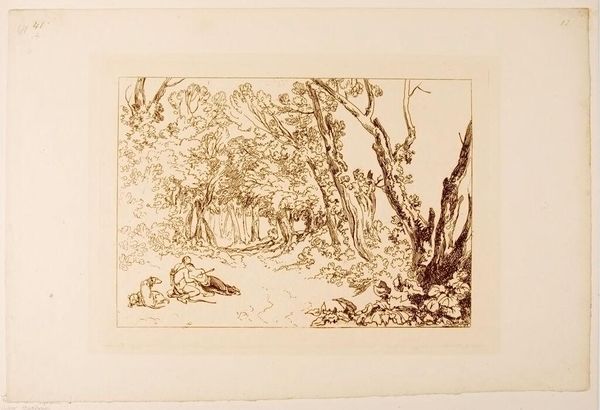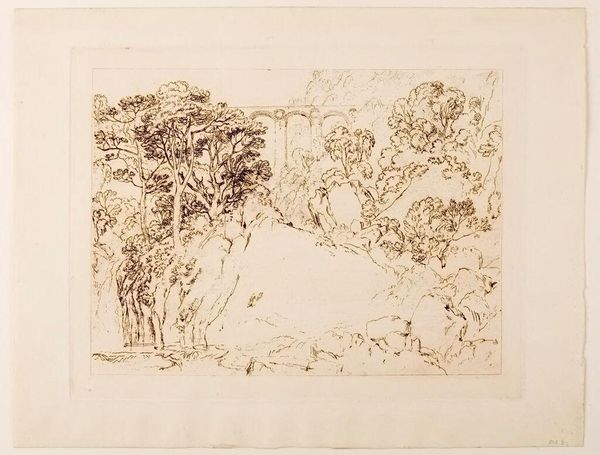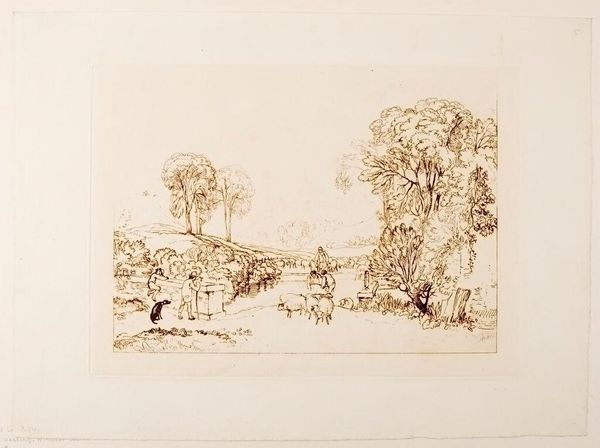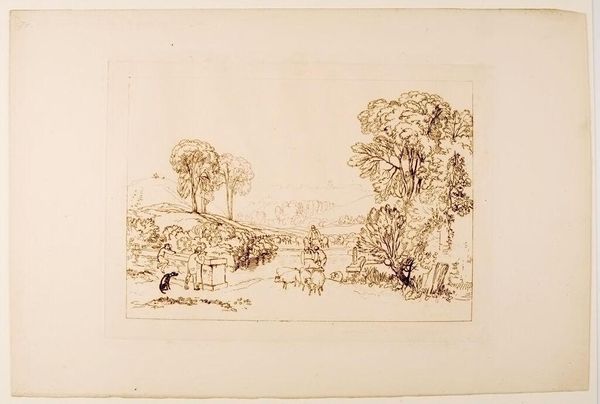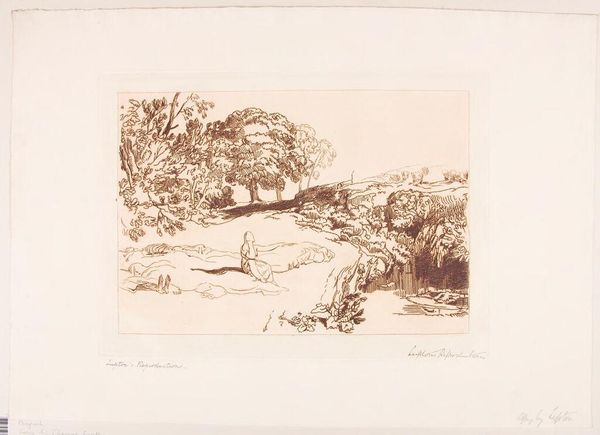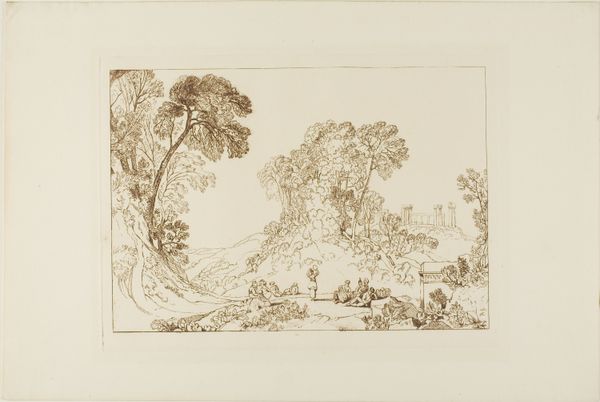
Copyright: CC0 1.0
Curator: Turner's "Glaucus and Scylla" captures a moment from Ovid’s Metamorphoses, a story laden with themes of unrequited love and monstrous transformation. Editor: It feels dreamlike. The sepia ink and the sketchy quality give it a sense of distance, as if we're observing a half-remembered myth. Curator: The narrative centers on Scylla, a nymph, and Glaucus, a sea god. Scylla spurns Glaucus' advances, leading him to the sorceress Circe, who, consumed by her own desire for Glaucus, poisons Scylla's bathing pool. Editor: And this leads to Scylla's transformation into a sea monster. You see the labor involved in etching captures the horror of unwanted change and the violence enacted upon women's bodies. Curator: Absolutely. The story underscores how power, particularly male power, distorts and punishes female autonomy, echoing across centuries. Editor: Turner, here, through his lines, hints at a story of creation and destruction. Thinking about the paper, the ink, and the printing process itself mirrors that transformation. Curator: Considering the context of Turner’s era and the surge of interest in classical mythology, his choices serve as a commentary on the aesthetic and moral values of the time. Editor: It leaves us pondering the means of representation as much as the story being told. Curator: Exactly. A reflection on the enduring power of myth.
Comments
No comments
Be the first to comment and join the conversation on the ultimate creative platform.
